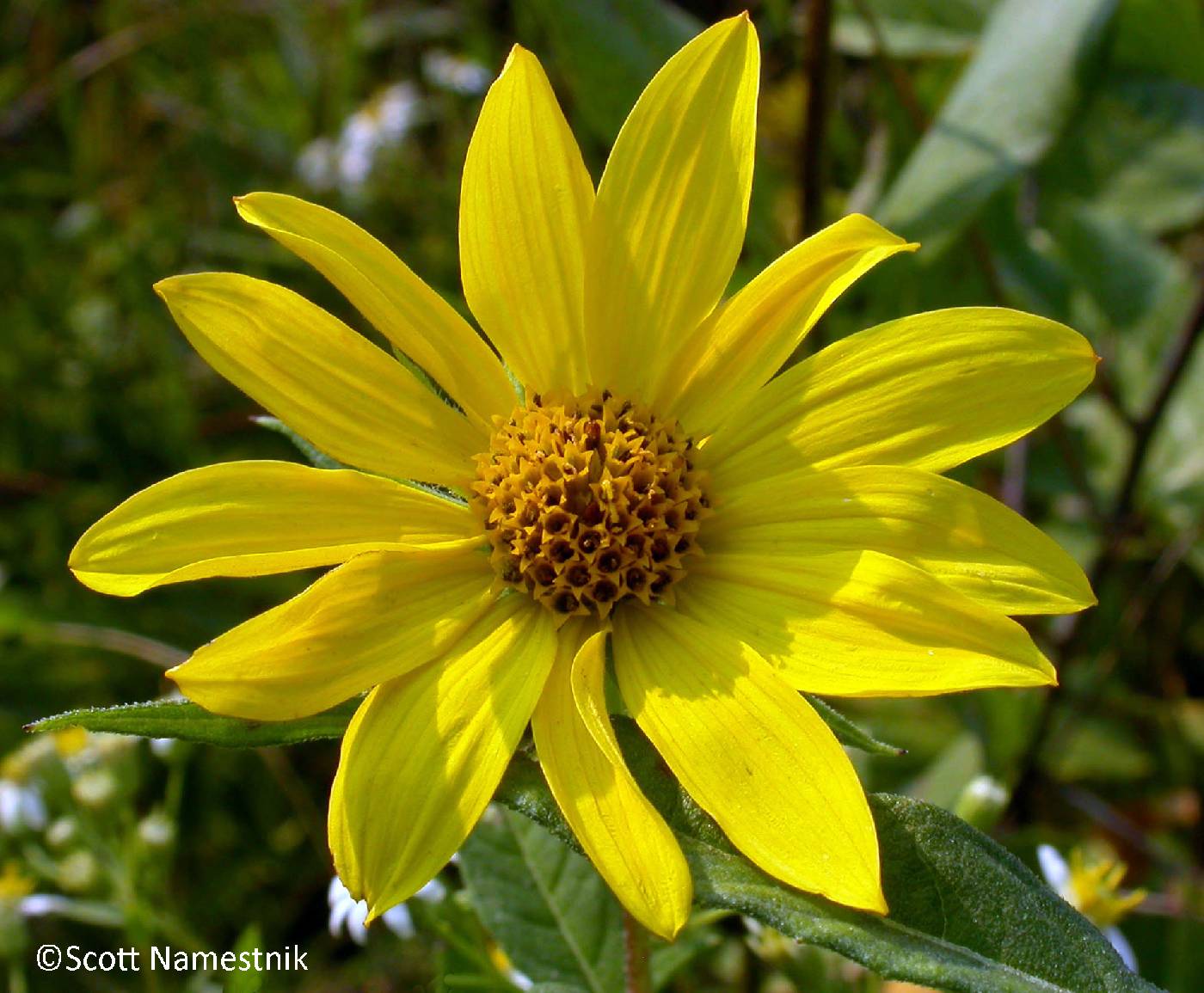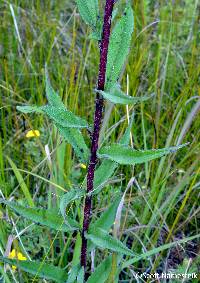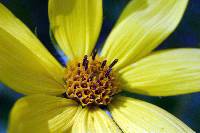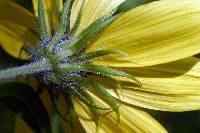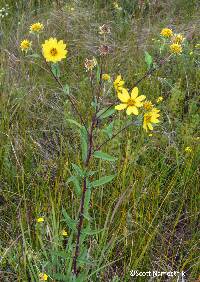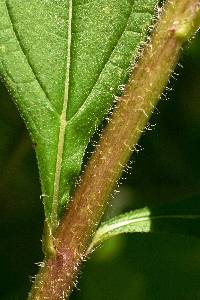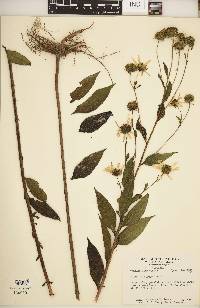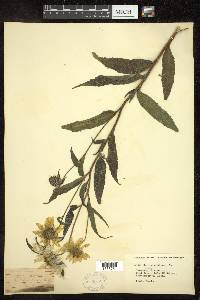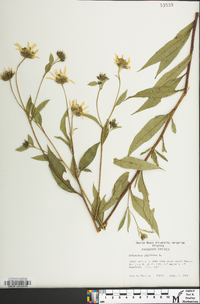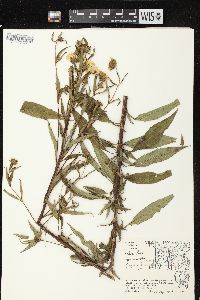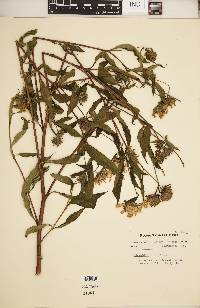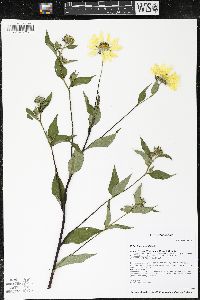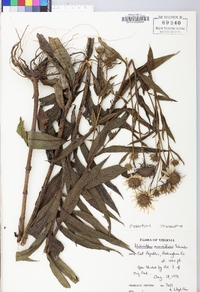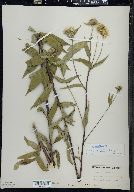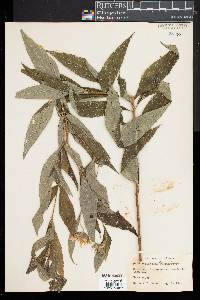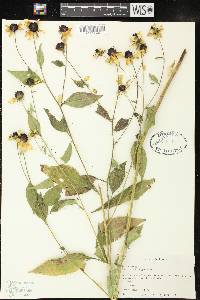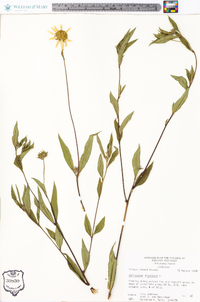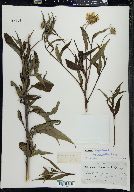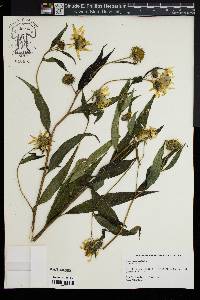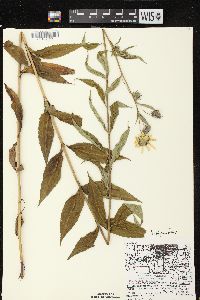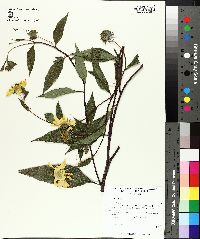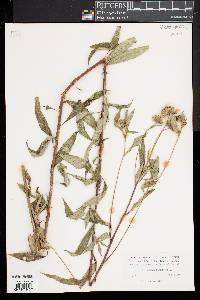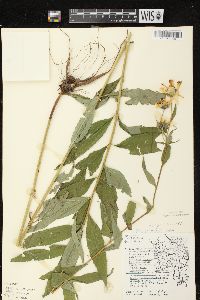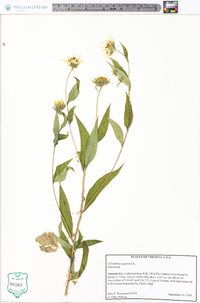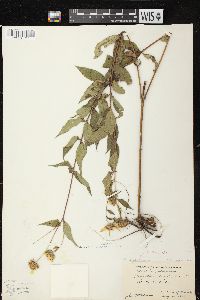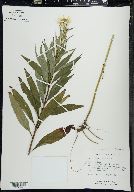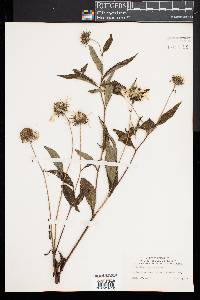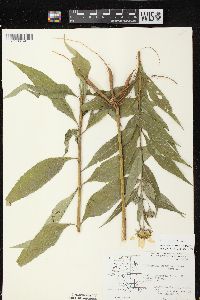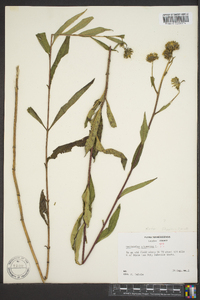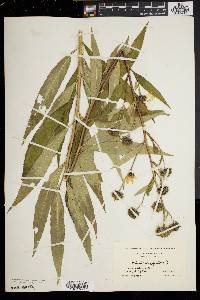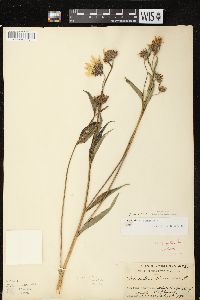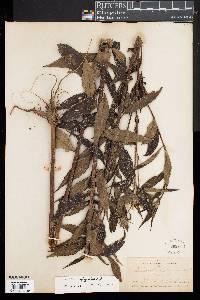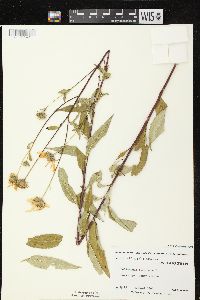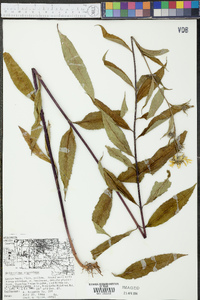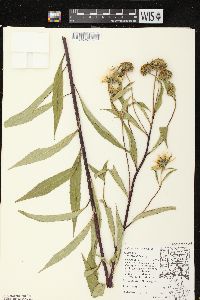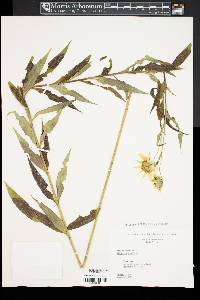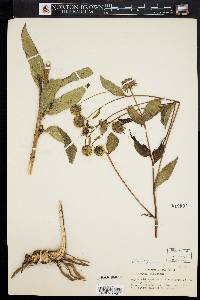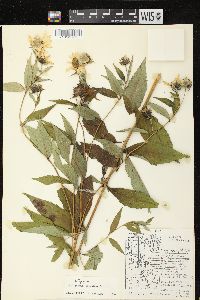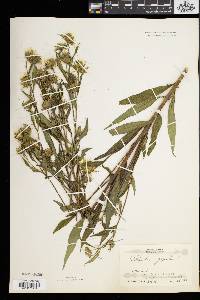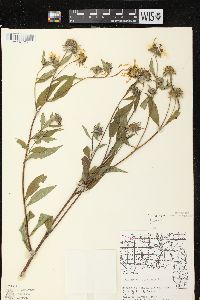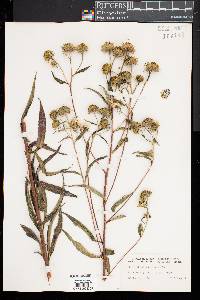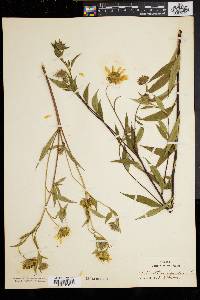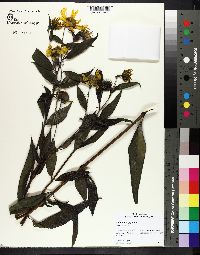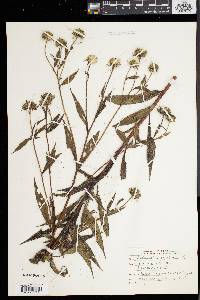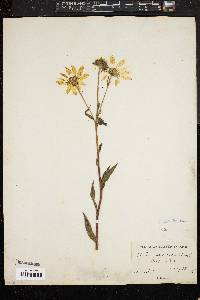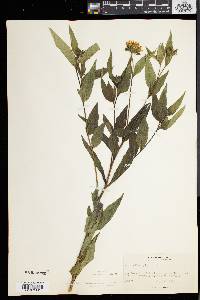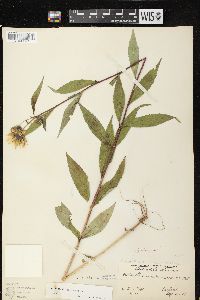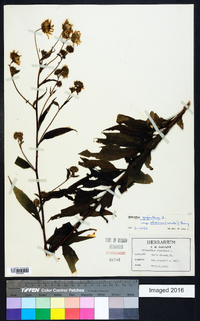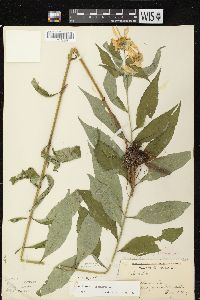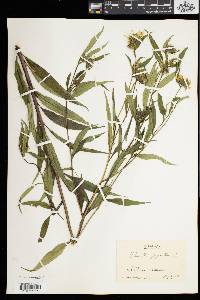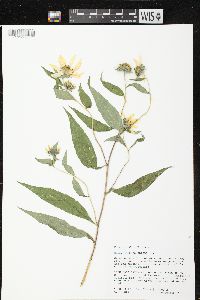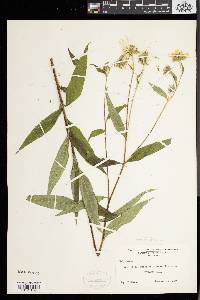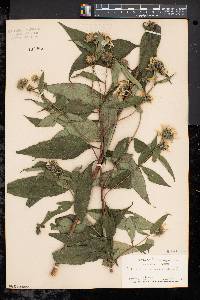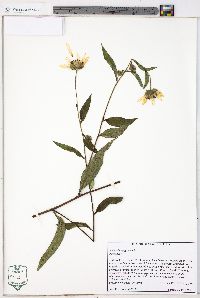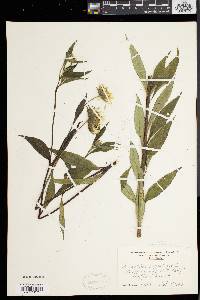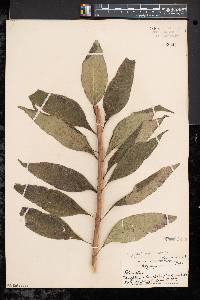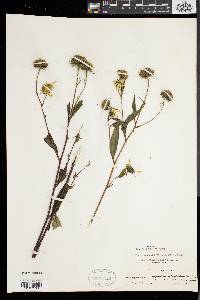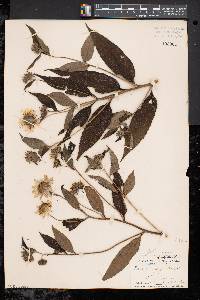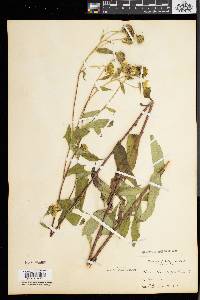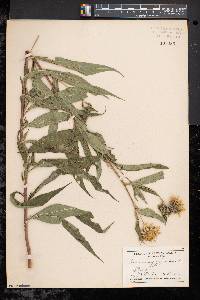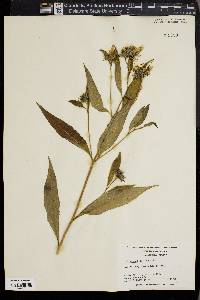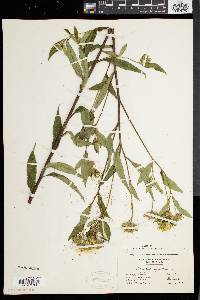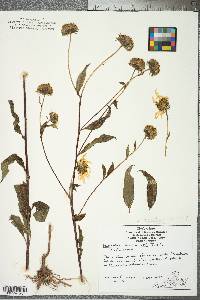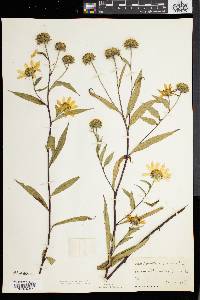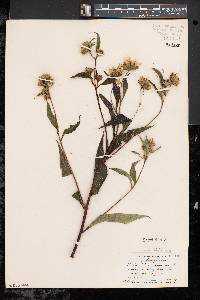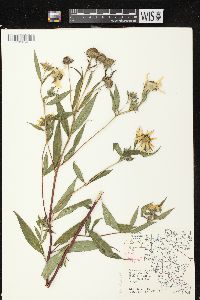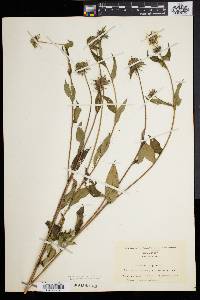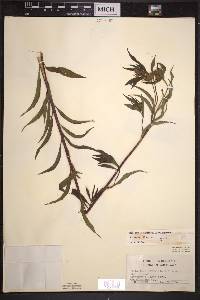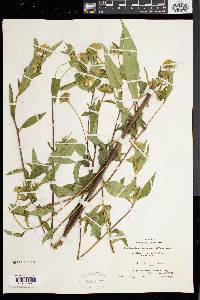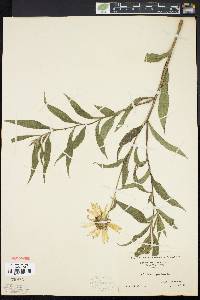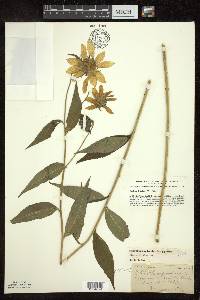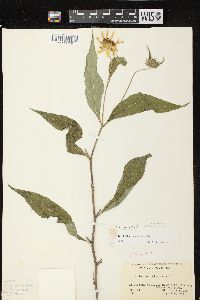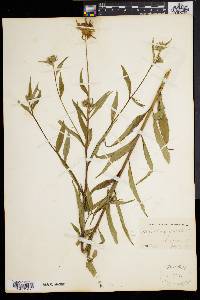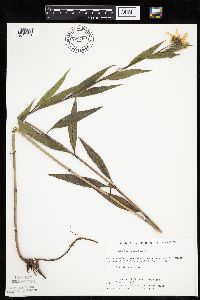Helianthus giganteus
|
|
|
|
Family: Asteraceae
Giant Sunflower, more...tall sunflower
|
Perennials, 100-400 cm (rhi-zomatous). Stems (usually reddish) erect, hairy. Leaves cauline; mostly alternate; petioles 0-1.2 cm (ciliate); blades (3-nerved from bases) lanceolate to lance-ovate, 7-20 × 1.2-3.5 cm, bases cuneate, margins serrulate to subentire (± flat), abaxial faces scabrous or ± hirsute, sometimes gland-dotted. Heads 1-12. Peduncles 8-12 mm. Involucres hemispheric, 10-24 mm diam. Phyllaries 20-25 (loose or spreading), linear, 8-15 × 1.2-2 mm, (margins usually ciliate) apices acute to attenuate , abaxial faces sparsely strigose, not gland-dotted. Paleae 7-9 mm, entire or ± 3-toothed (apices acute, hairy). Ray florets 12-20; laminae (often pale yellow) 15-25 mm (abaxial faces not gland-dotted). Disc florets 60+; corollas 5-6 mm, lobes yellow; anthers dark brown or black, appendages dark. Cypselae 3-4 mm, glabrate; pappi of 2 aristate scales 2.4-3 mm. 2n = 34. Flowering late summer-fall. Usually wet, open sites; 10-600+ m; N.B., Nfld. and Labr. (Nfld.), N.S., Ont., Que.; Conn., Del., D.C., Ga., Ill., Ind., Iowa, Kans., Ky., Maine, Md., Mass., Mich., Minn., Miss., N.J., N.Y., N.C., Ohio, Pa., S.C., Tenn., Vt., Va., W.Va., Wis. Helianthus giganteus was probably introduced in Newfoundland. It intergrades with H. nuttallii and H. grosseserratus; it is distinctive in its hairy, reddish-colored stems, dark anther appendages, and prominent setae on the petioles. The natural hybrid of H. giganteus with H. grosseserratus has been called H. luxurians E. Watson (R. W. Long 1954). Hybrids of H. giganteus with H. divaricatus have been referred to as H. ambiguus (Torrey & A. Gray) Britton and H. ×divariserratus R. W. Long (Long 1954).
Perennial with crown-buds, short rhizomes, and thickened, often fleshy roots; stems 1-3 m, coarsely spreading-hairy to occasionally subglabrous; lvs flat, strongly scabrous above, usually hirsute beneath, ±triplinerved at the base, strongly toothed to subentire, lanceolate, acuminate, 8-20 נ1-3.5 cm, tapering to the short petiole or petiolar base, the upper generally alternate; heads several or many in an open infl; disk yellow, 1.5-2.5 cm wide; invol bracts narrow, thin, green (or dark below), acuminate or attenuate, loose, often conspicuously surpassing the disk, strongly hirsute- ciliate and often hairy on the back; rays 10-20, 1.5-3 cm; 2n=34. Swamps and other moist places; Me. and N.B. to n. S.C. and n. Ga., w. to s. Alta. and Neb. Aug.-Oct. (H. subtuberosus; H. rydbergii, a nw. phase approaching the cordilleran H. nuttallii Torr. & A. Gray) Gleason, Henry A. & Cronquist, Arthur J. 1991. Manual of vascular plants of northeastern United States and adjacent Canada. lxxv + 910 pp. ©The New York Botanical Garden. All rights reserved. Used by permission. From Flora of Indiana (1940) by Charles C. Deam This sunflower grows in moist or wet mucky soils and is generally found in places such as decadent tamarack bogs, marshes, low borders of lakes, and in wet prairie habitats. It is frequent in our northern counties, becoming local south of the lake area. Doubtless it occurs in southwestern Indiana although I have not seen a specimen. ...... Indiana Coefficient of Conservatism: C = 6 Wetland Indicator Status: FACW Diagnostic Traits: plants to 3 m; stems reddish, pubescent; leaves alternate, scabrous, mostly <3 cm wide, serrate to nearly entire, hirsute beneath; petiole 0-1.5 cm; phyllaries hairy, ciliate 1+ mm. |

